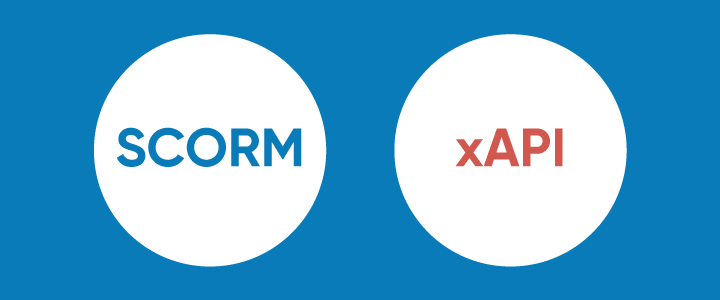
3 min reading time
xAPI vs SCORM: Which Should You Choose?
We work with SCORM and xAPI every day at LearnUpon. Lots of new customers ask for advice about which content standard they should use. Others that currently develop SCORM-compliant content ask about the value migrating to xAPI might add. Choosing between xAPI vs SCORM can seem confusing. But once your requirements are clear, it should be easy to spot which is most suitable. That’s because SCORM and xAPI are essentially different protocols. They provide alternative methods for achieving similar outcomes. Let’s look at the main differences between eLearning’s two main content standards to help you decide which you should use.
xAPI vs SCORM
Let’s use an example to explore the main differences between xAPI vs SCORM. Think about the different protocols you could use to order a pizza in 1980 or today. In the eighties, you would dial a pizza – pick up a phone, spin the dial, and place your order. While that protocol still works, the technology has dated. It’s clunky when compared to newer methods and, like SCORM, it has issues. There are other, and some would say better, ways to order pizza now. If you use an iPhone, you can press the home button and ask Siri to dial a pizza. Like the xAPI, that protocol offers a number of fancy improvements over the older method. An iPhone can track and record data about the call: call duration, your call history, and even information about how many steps you took when collecting the pizza. Like the xAPI, that protocol is mobile ready and tracks a lot more movements than the older method. While the processes look different, either can be used to complete the task of ordering pizza. The outcomes returned by SCORM and xAPI are also similar. Whichever standard you choose, the content of your eLearning course and its outcomes won’t look too different. Both protocols allow learners to launch courses, bookmark and complete them, answer quizzes, and pass or fail. That covers the main eLearning goals for most training professionals. It’s the process, the “how and what”, that will change. As our example indicates, SCORM is quite basic when compared to xAPI. Like dialing a pizza, it’s an old protocol. Over the last few years, xAPI has started to displace it.
Benefits of the xAPI
Some of the advantages of xAPI are also evident in our example. Smartphone technology offers a quicker, more efficient process than its predecessor. Your call is no longer limited by old wired landline technologies. You can order pizza from anywhere. Using an app to connect to a stored number allows less room for error than the outdated method of looking up a telephone book and dialing manually. Similarly, SCORM will work fine for users who just want to deliver and report on simple online courses. But xAPI has opened up a whole new world of possibilities – and it’s more fun!
xAPI is reliable
Because the xAPI spec was developed more recently, it’s less prone to error than SCORM. At LearnUpon, we frequently help customers experiencing issues with SCORM compliance on older browsers and authoring tools. On the other hand, we deal with very few queries that relate to xAPI. xAPI is just more reliable in most scenarios in our experience.
Better tracking
One major strength of xAPI is the breadth and depth of learning experiences it tracks. SCORM is limited to tracking desktop content. Its old technology is unreliable on browsers like Safari and devices like the iPad mini. That makes xAPI a lot more suited to the current landscape where “learning happens everywhere”. The increasing demand for mobile learning options has also driven the demand for xAPI.
Richer data
The technical detail of the xAPI spec allows it to capture more and richer data, more reliably than SCORM. A powerful LMS like LearnUpon allows you to automate reports based on the incredibly detailed data xAPI tracks. You can also integrate an LMS like LearnUpon with a Learning Record Store (LRS) to fully leverage xAPI’s reporting powers.
xAPI is evolving
The xAPI is a better option if you want to future proof eLearning content. Choosing xAPI allows you to benefit from the potential of a new technology that will be enhanced as it’s embraced by the industry. The issues that plague the SCORM 2004 specifications are unlikely to be addressed.
The limits of xAPI
xAPI won’t, however, improve the appearance or content of a course by itself. Some companies are interested in xAPI because they believe it will automatically create things like cool animations for mobile devices. That isn’t so. xAPI and SCORM-compliant courses are designed and developed in the usual way. Choosing SCORM or xAPI alters the protocol for how a course talks to your learning management system or LRS. It doesn’t change how the course looks or behaves. Choosing xAPI will still help you to get the most from your course content by allowing you to:
- Deliver reliable course content that works on the broadest range of devices and browsers.
- Get more detailed data about learner progress and performance.
- Future proof online course content.
If the decision is yours, choose xAPI. You won’t regret it!



